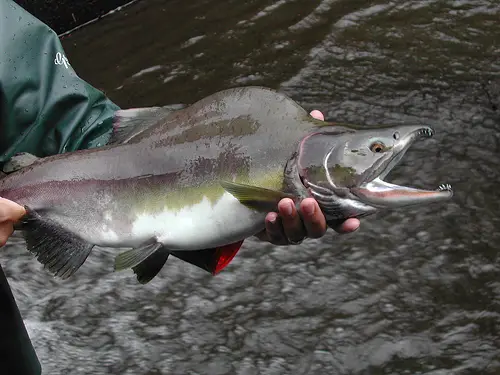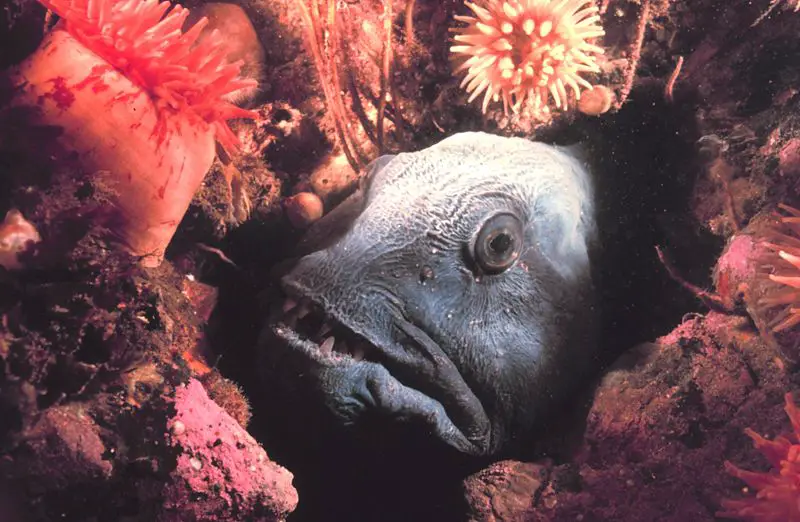Pink Salmon
The pink salmon (also known as the humpback salmon) is the smallest and most abundant Pacific salmon species. Its latin name derives the Russian name of this fish, gorbuša.
Some people think that ‘pink salmon’ derives from the color of the fish, like how the sockeye salmon is called the red salmon because it is reddish in color. But don’t let this name fool you, as pink salmon are actually a bright silver fish! After they returning to their spawning stream, they change color from bright silver to a pale grey butt, a yellow-white belly (but some are just dull green in color). In fact, the color ‘salmon pink’ is actually derived from the pink color of this fish’s flesh. Like the sockeye, its color is attributed to its diet.
Other than its unique color, it is also characterized by having a white mouth with black gums, no teeth on the tongue, large oval black spots on the back, a v-shaped tail, and an anal fin that has between 13 to 17 soft rays. When they are migrating during the spawning period, male pink salmons developed a humped back, which is why they are also known as ‘humpies’ or ‘humpback salmon’. On average, it weighs 4.8 pounds (2.2kg). The largest recorded pink salmon size was 30 inches (76cm) and weight 15 pounds (6.8kg).
They are a coldwater fish, and prefer water to be between 5.6 to 14.6°C. However, the most that they can last is 25.8°C. They are native to the Arctic coastal and Pacific waters ranging from the Sacramento River in northern California to the Mackenzie River in Canada. They are also found between the Lena River in Siberia to Korea. The Asian pink salmon species also live as far south as the Japanese island of Hondo. They were also introduced into the Great Lakes of North America successfully in a freshwater environment. However, they are most common in Lake Superior but are rare in Lake Michigan.
As this fish is quite popular, it is unfortunately critically endangered in both Washington and California. Fortunately in British Columbia and Alaska, they are both secure despite it being heavily fished in Alaska. Over 20 million pink salmon are harvested and produced by fisher-enhancement hatcheries, especially in Alaska. These fish are canned, salted, or smoked. Its roe is produced commercially as caviar.





